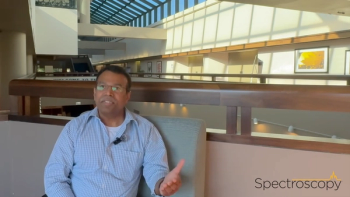
Steve Ray Wins Young Plasma Scientist Award
Steven J. Ray, an assistant professor of chemistry at the State University of New York at Buffalo, received the inaugural Young Plasma Scientist Award today at the Winter Conference on Plasma Spectrochemistry in Tucson, Arizona. The award, judged by an international selection committee and sponsored by Thermo Fisher Scientific, recognizes the work of a scientist no older than 45 years old working in the field of plasma spectrochemistry.
Steven J. Ray, an assistant professor of chemistry at the State University of New York at Buffalo, received the inaugural Young Plasma Scientist Award today at the Winter Conference on Plasma Spectrochemistry in Tucson, Arizona. The award, judged by an international selection committee and sponsored by Thermo Fisher Scientific, recognizes the work of a scientist no older than 45 years old working in the field of plasma spectrochemistry.
Ray, a member of the editorial advisory board of Spectroscopy, has published approximately 80 manuscripts, book chapters, and patents. He is the recipient of a 2011 R&D 100 Award, the 2013 Ron Hites Award for the best manuscript in Journal of the American Society for Mass Spectrometry, the 2014 SAS Lester Strock Medal, and the 2015 Analytical and Bioanalytical Chemistry Best Paper Award. Ray currently serves on the editorial board of the Journal of Analytical Atomic Spectrometry, and the editorial advisory boards of Spectrochimica Acta, and Part B and Analytical and Bioanalytical Chemistry. Professor Ray is also the 2106–2017 governing board chairman of the Federation of Analytical Chemistry and Spectroscopy Societies (FACSS).
Ray’s research interests involve novel aspects of analytical instrumentation, including distance-of-flight mass spectrometry, atomic spectroscopy, plasma spectrochemistry, and metallomics methodologies.
In addition to having his contributions recognized by the scientific community, Ray received a $5000 prize, a trophy, and travel support to the Winter Conference on Plasmachemistry.
Newsletter
Get essential updates on the latest spectroscopy technologies, regulatory standards, and best practices—subscribe today to Spectroscopy.





